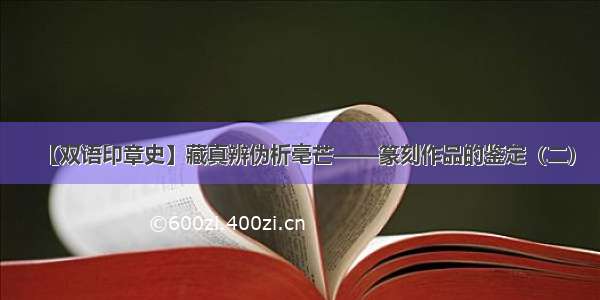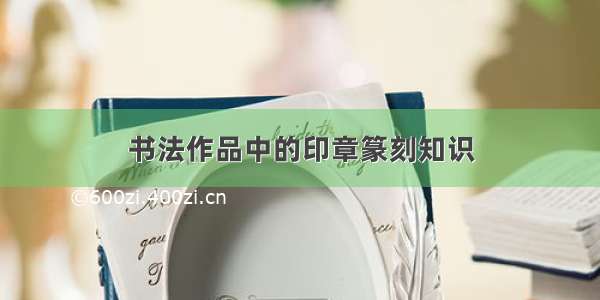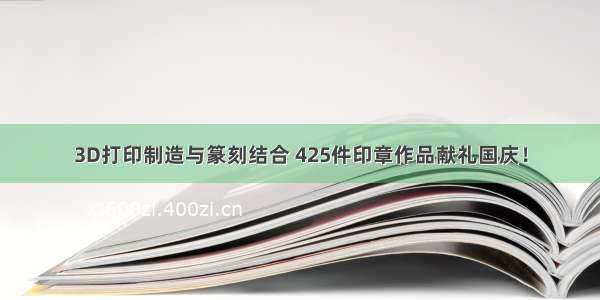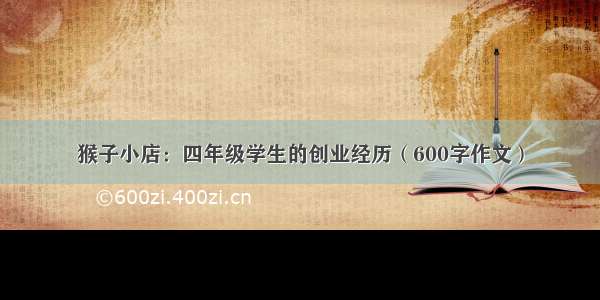
Collecting the Genuine and Discerning the Fake (Part two)
伪仿黄易
“覃溪鉴藏”(图a) 此印原为黄易刻予内阁大学士翁方纲的鉴藏印,见于何氏本《西冷四家印谱》著录 (图b)。粗略看印文、边款均与《印谱》所收相同,但细致辨析便可发现微妙的差别。 a印笔画清劲、工整有余,而不如b印朴质自然。说明是一件出自高明之手的仿作。此类伪作,稍一不慎,即易受惑。
Fake of Huang Yi""s Seal
“Appraised and Collected by Tan Xi”(覃溪鉴藏) (Fig. A) This seal was originally an appraisal and collection seal cut by Huang Yi for Grand Secretary Weng Fanggang, and appeared in the catalogue of He Yuanxi""s Collection of Seal Imprints of the Four Masters of the Xiling Seal Society (Fig. B). At a cursory look, the seal face and side inscription are the same as those in the Four Masters, but closer inspection reveals slight differences. The strokes in Seal A are gentle and neat, but are not as simple and natural as Seal B. This shows that the imitation was made by an expert. It is very easy to be taken in by such fakes without minute scrutiny.
a. 伪仿黄易“覃溪鉴藏”,(图a)
a. Fake verison of Huang Yi""s seal ""Appraised and Collected by Tan Xi"" (覃溪鉴藏). (Fig. a)
b. 何元锡本《西泠四家印谱》辑录的“覃溪鉴藏”, 青田石,上海博物馆藏(图b)
Qiantian stone seal ""Appraised and Collected by Tan Xi"" included in He Yuanxi""s Collected of SeaL Imprints of the Four Masters of the Xiling Seal Society. Shanghai Museum (Fig. b)
伪仿赵之谦
“星父”(图a)边款刻“同治甲子二月在杭州 赵之谦记”,用刀单薄、纤弱,显然是摹仿心态下特有的拘谨表现。再与另一印文(图b)比较,a印虽刻意求似,但“星”字的体势紧结终不及后者。此外,同治甲子(1864年)二月,赵之谦居于京城,而不“在杭州”。作伪者没有把时间设定妥当,露出又一个缺口 。
Fake of Zhao Zhiqian""s Seal
“Xing Fu”(星父) (Fig. A) The side inscription reads“In Hangzhou in February 1864 by Zhao Zhiqian”(同治甲子二月在杭州 赵之谦记). The cutting technique is weak and lacking force, the engraver obviously conscious of imitating and therefore overcautious. Comparing the two face inscriptions (Fig. B), although seal A was cut sedulously to be similar, the compactness of the form of the character Xing(星) is inferior to the latter. Furthermore, at the date cited in the side inscription Zhao Zhiqian was not living“in Hangzhou” but in the capital, Beijing. The engraver failed to get his dates right, thereby leaving another clue.
a. 伪仿赵之谦“星父”,寿山石,百螺斋所藏资料(图a)
a. Fake version of Zhao Zhiqian’s seal “Xing Fu” (星父) of Shoushan stone. Bai Luo Studio (Fig. a)
b.赵之谦“星父”(真)(图b)
b. Genuine “Xing Fu” (星父) (Fig. b)
伪仿吴昌硕
“仓硕·俊卿之印”是典型一例。(图a)真品见于吴昌硕《墨荷图》上所钤,原石藏上海博物馆。(图 b真)两印印文相似,但细加辨析仍有所区别。 b印边款记刻于丁丑(1877年)年,时年吴昌硕33 岁,印文风格与边款风格相符合;a印边款记甲午(1894年)年,时吴昌硕50岁。另外,a印的边款文辞亦欠贯通,是决非出于吴氏所刻的又一佐证。
Fake of Wu Changshuo’s Seal
A case in point is the forgery of Wu Changshuo""s “Cang Shuo-Seal of Jun Qing”(仓硕·俊卿之印)(Fig. A). An impression of the genuine article is seen on his painting Dark Lotus (墨荷图), and the original stone is in the Shanghai Museum. (Fig. B) The characters on the two impression faces are similar, but close analysis reveals differences. Seal B""s side inscription was cut in 1877, when Wu Changshuo was 33 years old. The style of the face and side inscription characters are identical. Seal A""s side inscription was cut in 1894, when Wu Changshuo was already 50 years old. Besides, the language in the seal A side inscription is less coherent, providing further evidence that it absolutely was not cut by Wu Changshuo himself.
a. 伪仿吴昌硕“仓硕·俊卿之印”,百螺斋所藏资料(图a)
a. Fake version of Wu Changshuo “Cang Shuo-Seal of Jun Qing”(仓硕·俊卿之印). Bai Luo Studio (Fig. a)
b. 吴昌硕“仓硕·俊卿之印”(真),昌化石,上海博物馆藏(图b)
b. Genuine Wu Changshuo seal Cang Shuo-Seal of Jun Qing”(仓硕·俊卿之印) of Changhua stone. Shanghai Museum(Fig. b)
明清篆刻的作伪,大体有凭空虚造、移花接木、刻意摹仿这样几类,另外还有利用磨失印文而存有真款的旧石补刻新文, 此种半真半伪的作品,也往往比较容易瞒天过海。
The fake seal works of the Ming and Qing dynasties can be roughly divided into three types: prefabrication, “grafting onto a host tree,” and sedulous imitation. Besides, old stones with characters lost from the face but genuine side inscriptions were engraved with new content. Such mixtures of genuine and fake could often deceive.
责任编辑:朱小雨、易晔
您的转发与点赞是对我们工作的最大鼓励!
















